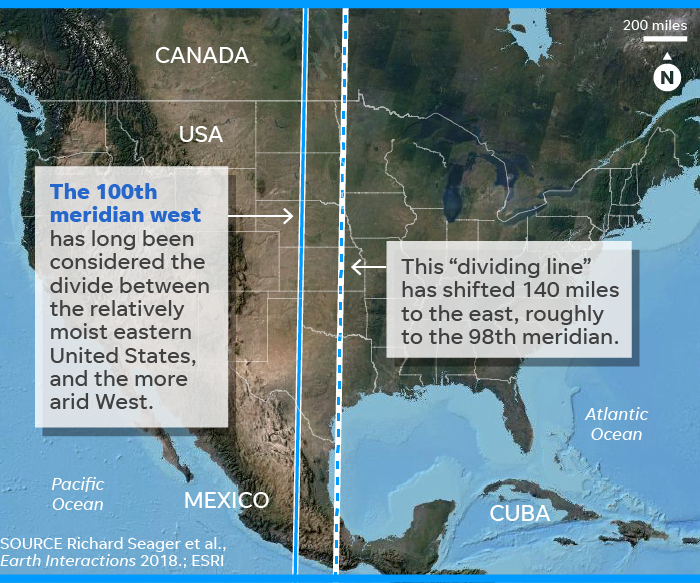A boundary that divides the humid eastern U.S. and the dry western Plains appears to have shifted 140 miles to the east over the past century due to global warming, new research suggests.
Scientists say it will almost certainly continue shifting in coming decades, expanding the arid climate of the western Plains into what we think of as the Midwest. The implications for farming could be huge.
The boundary line was first identified in 1878 by the American geologist and explorer John Wesley Powell. At that time, it was at 100 degrees west longitude, also known as the 100th meridian.
“Powell talked eloquently about the 100th meridian, and this concept of a boundary line has stayed with us down to the current day,” said Richard Seager, a climate scientist at Columbia University's Lamont-Doherty Earth Observatory. Seager is the lead author of two new studies about the shifting climate boundary.
Running south to north, the 100th meridian cuts through Texas, Oklahoma, Kansas, Nebraska and the Dakotas. It's considered the beginning of the Great Plains, a windswept, largely treeless expanse that covers large parts of 10 states and occupies one-fifth of the nation's land area. Yet its population is less than Georgia's.
Both population and development are sparse west of the 100th meridian, where farms are larger and primarily depend on arid-resistant crops like wheat, the Yale School of Forestry & Environmental Studies said. To the more humid east, more people and infrastructure exist. Farms are smaller and a large portion of the harvested crop is moisture-loving corn.
Now, due to shifting patterns in precipitation, wind and temperature since the 1870s — due to man-made climate change — the boundary between the dry West and the wetter East has shifted to roughly 98 degrees west longitude, the 98th meridian.
For instance, in Texas, the boundary has moved approximately from Abilene to Fort Worth.
According to Columbia University’s Earth Institute, Seager predicts that as the line continues to move farther East, farms will have to consolidate and become larger to remain viable.
And unless farmers are able to adapt, such as by using irrigation, they will need to consider growing wheat or another more suitable crop than corn.
"Large expanses of cropland may fail altogether, and have to be converted to western-style grazing range. Water supplies could become a problem for urban areas,” the Earth Institute said.


